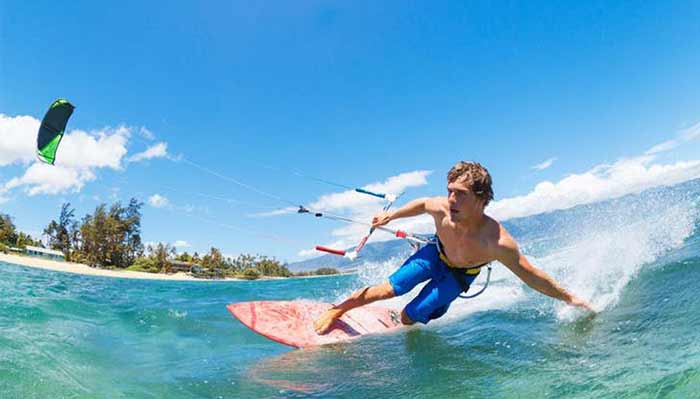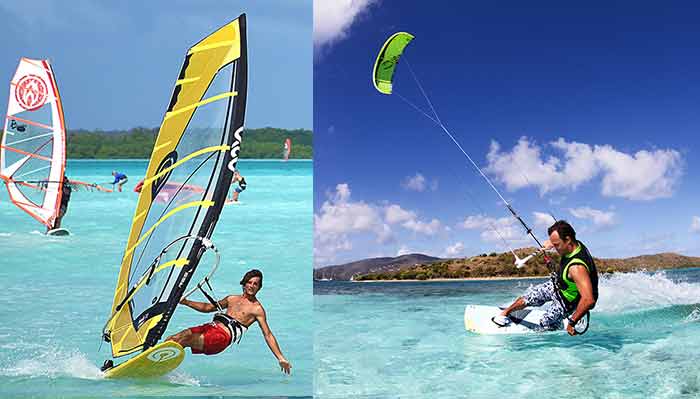Kiteboarding vs Kitesurfing
To some, there isn’t much difference between kiteboarding and kitesurfing. In fact, the words are used interchangeably by a lot of people in the water sports arena. However, while the two are closely related, there are some distinctive differences between them as shall be explained in this article.
Generally, both sports entail riding on a board on water while being pulled by a kite. However, kiteboarding is the overall name for this kind of sport while kitesurfing refers to a type of kiteboarding specific to riding waves. Other differences include the types of boards used and the style of riding the water.
Kiteboarding vs Kitesurfing: Core Differences
Among the points to consider when comparing the two sports include the following:
1. History
In terms of history, both sports are quite young as the earliest time a kite was used in combination with a board was in the early 1980s. In the early stages, kiteboarding was the original sport with kitesurfing coming afterwards as an offshoot in the 1990s. Kiteboarding combined the elements of paragliding, skateboarding, wakeboarding, sailing, snowboarding, windsurfing, and surfing.

Kiteboarding has become very popular in the Czech Republic, Argentina, the United States, France and Canada. On the other hand, kitesurfing grew in popularity in the Oceania, Russia, Europe, Brazil, the Middle East and India.
2. Type of Board
The board for kiteboarding is a ‘twin tip’ type which can move in either direction just like in the case of the wakeboard. On the other hand, the board for kitesurfing is basically a surfboard which can be ridden in one direction only.
This board for kitesurfing also performs better on waves since the sport is most suited for that. You can also easily perform tricks with the kitesurfing board as compared to the relatively restrictive kiteboard.
For a start, however, most people will start with the twin tip board as it offers better stability. This kind of board will allow you master the basics of surfing and combining the same with kites.
Skills such as balancing, transitioning, staying up the wind, performing stunts, moving over waves and controlling kites are best learned with a twin tip surfboard.
3. Level of Safety
Generally speaking, the level of risk in kiteboarding and kitesurfing is higher than most other water sports such as surfing, skiing and wakeboarding. The reason is that kites respond more to the speed and other aspects of the wind rather than the surfer. As such, proper training is needed to pull off both sports.
However, given that kitesurfing is focused on riding waves and has a riskier surfboard, it’s the more dangerous of the two sports. This is further reinforced by the fact that most people learn kiteboarding in calm waters before attempting to do it on the waves as kitesurfing.
Which One is Better?
When choosing the two sports, the one thing you need to focus on is your level of risk-taking. If you’re the type who are okay handling raging waves, kitesurfing is for you. If you prefer consistency and predictability, kiteboarding will appeal to you. However, learning one makes it quite easy to perform the other sport as well.


